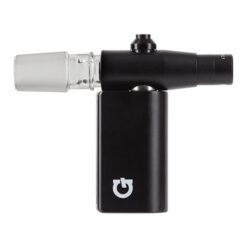Cannabis has long held a controversial place in society, but recent years have witnessed a shift in perception. This article delves into the intricate relationship between cannabis, the mind, and the body, exploring the science behind its effects, its potential therapeutic applications, and the social and legal implications of its use.
The Science Of Cannabis
Cannabis, often called the “weed of wonder,” conceals within its leaves a treasure trove of chemical compounds that interact with our bodies in intricate ways. While THC and CBD are the most celebrated cannabinoids, there are over a hundred others waiting to be explored. These compounds, alongside the lesser-known terpenes, give each cannabis strain its unique flavour and effects. Understanding this chemical symphony within the plant is the key to unlocking its potential for both recreation and healing.
What Are Cannabinoids And How Do They Interact With The Human Body?
Cannabinoids are the chemical compounds found in cannabis that interact with the body’s endocannabinoid system. This intricate network of receptors, enzymes, and endocannabinoids plays a crucial role in regulating various physiological processes. Tetrahydrocannabinol (THC) and cannabidiol (CBD) are the two primary cannabinoids, each with distinct effects. While THC is known for its psychoactive properties, CBD is non-psychoactive and is associated with potential therapeutic benefits.
The Role Of THC And CBD
THC primarily binds to CB1 receptors in the brain, leading to altered perception, mood, and cognition. CBD, on the other hand, interacts with CB2 receptors and other neurotransmitter systems, exerting its effects on pain, inflammation, and anxiety. Both cannabinoids, in different ways, influence the mind and body.
What Are The Different Types Of Cannabis Strains?
Cannabis strains can be broadly categorised into Indica and Sativa, each with its unique set of characteristics. Indica strains are often associated with relaxation and sedation, while Sativa strains tend to be more uplifting and energising. Hybrid strains combine elements of both.
Indica Vs. Sativa: Understanding The Differences
Indica strains typically have higher CBD content, making them suitable for relaxation and pain relief. Sativa strains, with higher THC levels, are often preferred for their euphoric and creative effects. However, the effects of strains can vary widely depending on individual factors.
How Is Cannabis Typically Consumed?
Cannabis can be consumed in various ways, each affecting the mind and body differently.
Smoking Vs. Vaping Vs. Edibles
Smoking and vaping offer rapid onset of effects, making them popular choices for recreational users. Edibles, on the other hand, take longer to kick in but provide longer-lasting and potentially more potent effects. The method of consumption influences the intensity and duration of cannabis effects.
Dosage Considerations
Determining the right dosage is crucial to avoid adverse effects. Factors such as tolerance, body weight, and experience level should be considered when using cannabis. Starting with a low dose and gradually increasing can help prevent overconsumption.
The Mind-Altering Effects
The mind-altering dance of cannabis with our brain’s receptors is a fascinating interplay. Beyond the well-known memory lapses and creativity sparks, cannabis can also influence time perception, sometimes making minutes feel like hours. It can enhance sensory experiences, making music sound richer and food taste divine. Yet, like any powerful ally, it must be wielded wisely, for overindulgence can lead to the unsettling realm of anxiety and paranoia.
How Does Cannabis Affect Cognitive Functions?
Cannabis can impair memory, attention, and decision-making, especially when high THC strains are used.
Memory And Concentration Impairment
THC’s impact on short-term memory can result in forgetfulness and difficulty concentrating. Frequent cannabis use may lead to long-term cognitive deficits, although these effects are reversible upon cessation.
Creativity And Cannabis
Some users report enhanced creativity under the influence of cannabis. It can help individuals think outside the box and explore novel ideas, making it a tool for artists and innovators.
Can Cannabis Be Used As A Therapeutic Tool For Mental Health?
Cannabis has emerged as a potential ally in the realm of mental health, with CBD taking the spotlight. Unlike its psychoactive counterpart, THC, CBD offers the promise of relief without the intoxication. Preliminary research suggests that CBD can be a calming force in the storm of anxiety and depression.
It’s thought to interact with serotonin receptors in the brain, which play a key role in regulating mood. Furthermore, CBD may hold potential in addressing a spectrum of mental health conditions, including post-traumatic stress disorder (PTSD), social anxiety, and even addiction. While not a cure-all, it opens a new avenue for those seeking alternative approaches to mental wellness.
Exploring Its Potential For Anxiety And Depression
CBD’s ability to modulate the endocannabinoid system can help alleviate symptoms of anxiety and depression without the psychoactive effects of THC.
The Role Of Cannabis In Managing PTSD
Emerging research suggests that cannabis, particularly CBD-rich strains, may offer relief to individuals suffering from post-traumatic stress disorder (PTSD). It helps in reducing the intensity and frequency of traumatic memories.
What Are The Potential Risks Of Cannabis-Induced Psychosis?
Cannabis-induced psychosis is a shadowy side of the plant’s effects, typically associated with high THC strains and pre-existing vulnerabilities. It’s not a common outcome, but it’s a stark reminder of cannabis’s complexity.
When THC levels are exceptionally high, they can trigger hallucinations, delusions, and paranoia in susceptible individuals. Those with a family history of mental illness or a predisposition to conditions like schizophrenia are at a higher risk. This risk underscores the importance of responsible use and dosage control, especially in an era where potent cannabis products are more readily available.
Understanding The Link Between High THC Levels And Psychosis
THC, when consumed in high doses, can induce psychotic symptoms such as hallucinations and paranoia. Those with a predisposition to mental health disorders are more susceptible.
Vulnerable Populations And Psychosis
Adolescents and young adults, as well as individuals with a family history of mental illness, should exercise caution when using high-THC cannabis products to minimise the risk of psychosis.
The Body-Altering Effects
Cannabis isn’t content with just altering the mind; it extends its influence to the body. The plant’s compounds can trigger the notorious “munchies,” driving cravings for snacks. This appetite stimulation can be a blessing for those with appetite loss due to illness.
Additionally, cannabis may impact body weight, with some intriguing links between regular use and lower BMI. However, the relationship between cannabis and metabolism is far from straightforward, and further research is needed to unveil the full story.
How Does Cannabis Impact The Respiratory System?
The respiratory system may bear the brunt of cannabis consumption, particularly when it involves smoking. Cannabis smoke contains many of the same harmful chemicals found in tobacco smoke, which can irritate the lungs and lead to chronic bronchitis-like symptoms.
Although cannabis vaping is considered a less harmful alternative to smoking, it’s not entirely without risk. Vaporizers heat the plant material, releasing cannabinoids without combustion, but they can still expose the lungs to potential irritants. Exploring alternative consumption methods, such as edibles or tinctures, may be a prudent choice for individuals concerned about their lung health.
Smoking Cannabis And Lung Health
Smoking cannabis, like tobacco, can expose the lungs to harmful toxins and irritants. Chronic cannabis smoking is associated with bronchitis and respiratory symptoms. Users concerned about lung health may consider alternative consumption methods.
Alternative Methods Of Consumption And Lung Health
Vaporisation and edibles are less harmful to the respiratory system. Vaporizers heat cannabis to release cannabinoids without combustion, reducing the intake of harmful compounds. Edibles bypass the respiratory system altogether but come with their own set of considerations, such as delayed onset.
What Are The Effects Of Cannabis On The Cardiovascular System?
Cannabis’s influence extends to the cardiovascular system, with THC playing a notable role. When THC enters the bloodstream, it can temporarily increase heart rate and blood pressure. While this effect is generally well-tolerated by healthy individuals, it could pose risks to those with underlying heart conditions. Monitoring one’s vital signs after cannabis consumption can provide valuable insights into how the body responds, ensuring safety for those with cardiovascular concerns.
Blood Pressure And Heart Rate Considerations
THC can temporarily raise heart rate and blood pressure. While this increase is generally not harmful for healthy individuals, those with heart conditions should exercise caution when using cannabis.
How Does Cannabis Influence Appetite And Metabolism?
Cannabis’s renowned “munchies” effect is a testament to its influence on appetite. THC, in particular, triggers the release of hunger hormones, making food exceptionally appealing. This property can be a boon for individuals undergoing treatments like chemotherapy, which often lead to appetite loss.
Beyond the “munchies,” cannabis’s impact on metabolism is a subject of intrigue. Some studies suggest that regular cannabis users may have lower BMIs and a reduced risk of obesity, but this relationship is far from fully understood. As researchers delve deeper into the intricate interactions between cannabis and metabolism, new insights may emerge, shedding light on the potential benefits for weight management.
The Infamous “Munchies”
THC stimulates the release of hunger hormones, making food more appealing. This effect can be beneficial for individuals with reduced appetite due to medical conditions or treatments like chemotherapy.
Potential Applications For Weight Management
Paradoxically, some studies suggest that regular cannabis users may have lower body mass indexes (BMIs) and a reduced risk of obesity. However, more research is needed to fully understand the relationship between cannabis and metabolism.
Medicinal Potential And Therapeutic Applications
The medicinal potential of cannabis goes beyond pain management and seizure control. Recent studies suggest it may hold promise in treating conditions ranging from inflammatory diseases to neurodegenerative disorders. Some cannabinoids and terpenes exhibit anti-inflammatory and antioxidant properties, opening doors to novel therapies. As medical cannabis programs gain traction worldwide, patients are finding relief in a plant that has been used for healing for centuries.
What Medical Conditions Can Cannabis Be Used To Treat?
Beyond the well-documented pain relief and seizure control, cannabis has demonstrated therapeutic potential in a diverse array of medical conditions. From inflammatory disorders like Crohn’s disease to neurodegenerative diseases like Parkinson’s, the plant’s compounds offer a glimmer of hope. Even mental health conditions, such as anxiety and PTSD, are being explored for cannabis-based treatments. The evolving landscape of medical cannabis holds the promise of improved quality of life for patients facing a myriad of health challenges.
Chronic Pain Management
Medical cannabis has been used to effectively manage chronic pain conditions, offering an alternative to opioids.
Epilepsy And Seizure Control
CBD-rich cannabis products have gained attention for their potential to reduce the frequency and severity of seizures in individuals with epilepsy, particularly in cases resistant to conventional treatments.
What Is The Current State Of Cannabis Legalisation For Medical Use?
The legal status of medical cannabis varies considerably across the globe. Some countries and regions have embraced comprehensive medical cannabis programs, providing patients with access to regulated products. However, in other areas, the path to medical cannabis accessibility remains fraught with legal obstacles and regulatory hurdles. This patchwork of laws and regulations underscores the need for continued advocacy and education to ensure that patients receive the care they deserve.
Case Studies Of Countries With Successful Medical Cannabis Programs
Countries like Canada and certain U.S. states have established robust medical cannabis programs that provide patients with safe access to cannabis products. These programs often involve strict regulations to ensure product quality and patient safety.
How Is Cannabis Used In Palliative Care?
In the realm of palliative care, cannabis emerges as a source of solace for individuals facing terminal illnesses. Its ability to alleviate pain, reduce nausea, and induce relaxation can significantly improve the quality of life for those in the final stages of their journey. The prospect of finding comfort and relief in cannabis offers a glimmer of hope in challenging times.
However, its use in palliative care also raises ethical and legal considerations, particularly in regions with strict drug regulations. Striking the right balance between compassion and compliance is an ongoing challenge for healthcare providers and policymakers alike.
Improving The Quality Of Life For Terminally Ill Patients
Medical cannabis can help alleviate pain, nausea, and anxiety in individuals with terminal illnesses, improving their overall quality of life.
Legal And Ethical Considerations
The use of cannabis in palliative care raises ethical and legal questions, particularly in regions with strict drug regulations. Balancing patient needs with legal constraints is an ongoing challenge.
The Power Of Cannabis: A Double-Edged Sword
The power of cannabis is undeniably potent, but it is not without its perils. Societal perceptions and legislation continue to evolve, reflecting a growing recognition of cannabis’s potential benefits. Yet, the shadow of addiction looms, and responsible use becomes paramount. Striking a balance between personal freedom and public safety in a world where pot is increasingly potent and accessible remains a challenge. As we navigate this nuanced landscape, the power of cannabis unfolds, revealing both its blessings and burdens.
What Are The Social And Legal Implications Of Cannabis Use?
Cannabis’s journey through history has been fraught with complex social and legal dynamics. It has oscillated between being revered as a sacred plant and vilified as a dangerous substance. The evolving perceptions of cannabis are reflected in changing legislation, with many countries and states now reevaluating their approach to its use. While shifting towards decriminalisation and regulation, societies grapple with issues of personal freedom, public safety, and the impact of decades of stigmatisation.
The History Of Cannabis Prohibition
The criminalisation of cannabis has deep historical roots, often influenced by racial and political factors. Understanding this history is crucial to appreciate the changing landscape of cannabis legalisation.
Changing Attitudes And Legislation
Recent years have seen a significant shift in public perception and legalisation efforts, with many countries and states opting to regulate cannabis for both medical and recreational use. This shift reflects changing attitudes towards its potential benefits and harms.
What Are The Potential Risks Of Cannabis Addiction?
While cannabis is not as addictive as substances like opioids or nicotine, it is not without risks. Some individuals can develop dependency on cannabis, impacting their daily lives and relationships. Cannabis use disorder is a recognized condition, and those affected may require professional help to overcome it. Understanding the signs and seeking support early on are crucial steps in addressing this potential risk.
Cannabis Use Disorder And Its Impact On Daily Life
Cannabis use disorder can interfere with daily responsibilities and relationships, prompting the need for treatment.
Treatment Options For Cannabis Addiction
Therapies, support groups, and counselling can help individuals overcome cannabis addiction and regain control over their lives.
How Can Individuals Make Informed Decisions About Cannabis Use?
Navigating the world of cannabis requires knowledge and responsible decision-making. Education is key to understanding the plant’s effects, dosage considerations, and harm reduction strategies. Individuals must familiarise themselves with their own tolerance levels and choose strains that suit their needs and preferences. Open and honest discussions about cannabis, free from stigma, can empower individuals to make informed choices that prioritise their health and well-being.
Responsible Use And Harm Reduction Strategies
Understanding one’s tolerance, choosing suitable strains, and avoiding excessive consumption are steps towards responsible cannabis use. Harm reduction strategies, such as not driving under the influence, also play a vital role in ensuring safety.
Access To Accurate Information
Access to reliable information is crucial for individuals to make informed decisions about discussions.
In conclusion, Cannabis remains a complex and multifaceted substance with the potential to alter both the mind and body. Understanding its science, potential benefits, and risks is essential for individuals seeking to harness the power of pot responsibly. As research continues to expand our knowledge, the evolving relationship between society, science, and cannabis will undoubtedly shape its future use and regulation.
-
DynaVap – “M7” Vaporizer
R1,750.00 -
Grenco Science – G Pen Roam
R3,750.00Original price was: R3,750.00.R2,999.00Current price is: R2,999.00. -
Grenco Science – G Pen Connect Vaporizer
R2,750.00Original price was: R2,750.00.R1,999.00Current price is: R1,999.00. -
BLK Kiss Dry Herb Vaporizer
R1,050.00














